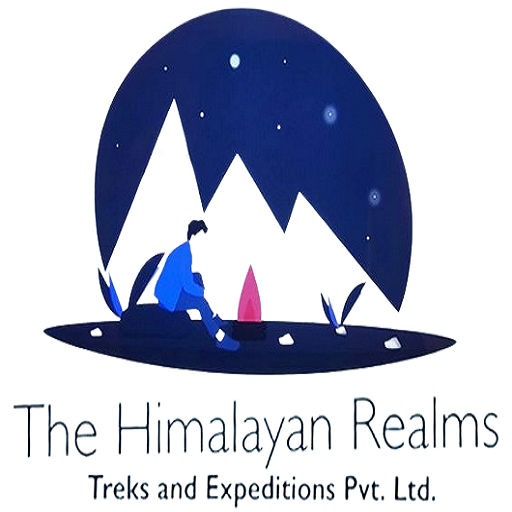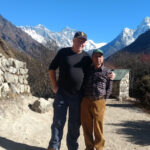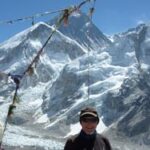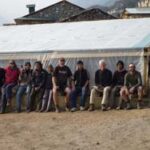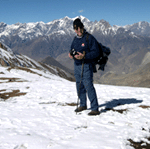Overview of the Namche Bazar
Namche Bazaar is a vibrant mountain town in Nepal. Namche Bazaar is located at an altitude of approximately 3,440 meters (11,286 feet) in the Khumbu region. Namche Bazar is often referred to as the “gateway to Everest” because it serves as a crucial stop for trekkers like mountaineers heading to Mount Everest and other Himalayan peaks. Here are some key details about Namche Bazaar: The name of the “Namche Bazaar” (or “Namche Bazar”) reflects the town’s historical role as a trade hub. The word “Namche” likely comes from the local Sherpa or Tibetan dialect, meaning “open space” or “marketplace.”
Early Settlement: The Sherpa people, who are the primary inhabitants of the region, are believed to have migrated from Tibet to the Khumbu region in the 15th to 16th centuries. They settled in various areas, including Namche, due to its fertile land, proximity to trade routes, and access to water sources. The Namche’s bowl-shaped geography, nestled on the slope of a mountain, made it a natural spot for settlement and commerce.
About the vegetation around Namche Bazaar: it reflects the characteristics of the Himalayan alpine and subalpine ecosystems, which are shaped by the high altitude, cool temperatures, and short growing seasons. Here’s an overview of the types of vegetation found in the area: Alpine Vegetation (Around Namche Bazaar and Above), Altitude Range: 3,500–4,500 meters (11,500–14,800 feet). Dominant Vegetation: Grasses, shrubs, and hardy plants adapted to cold and harsh conditions. Grasses and Sedges: Various species of grass and sedge cover open meadows, providing grazing for yaks. Dwarf Rhododendrons: Low-growing rhododendron species that thrive in the cold, windy climate. Juniper Shrubs: Stunted junipers grow in the area and are often used by locals for incense and fuel. Herbs: Hardy flowering plants like gentians (Gentiana), primulas (Primula), and edelweiss.
Vegetation: Cold Tolerance: Plants in this region are adapted to survive freezing temperatures, with slow growth and hardy leaves. Wind Resistance: Many plants, like dwarf shrubs, are low-growing to avoid damage from strong mountain winds. Namche Bazaar’s vegetation is a mix of subalpine forests, alpine shrubs, and cultivated crops, shaped by its unique high-altitude environment and the interplay between natural ecosystems and human activity. Air pressure and oxygen levels.
Thin Air: Due to its high altitude, the atmospheric pressure in Namche Bazaar is lower than at sea level. This means the oxygen levels in the air are reduced (approximately 66%). Visitors often feel the effects of reduced oxygen, such as shortness of breath or mild altitude sickness, especially during their first few days.
Location and Accessibility: Geography: Namche is nestled in a crescent-shaped bowl surrounded by towering peaks, including Kongde Ri and Thamserku. Access: Most visitors reach Namche by trekking from Lukla, which has a small airport (Tenzing-Hillary Airport). The trek from Lukla to Namche typically takes 2-3 days and includes crossing suspension bridges and ascending steep trails.
Importance and Role: Trading Hub: Historically, Namche Bazaar was a trading post where Tibetan and Nepalese traders exchanged goods such as salt, wool, and other commodities. Today, it remains a significant town market in the region. It is an acclimatization point for trekkers on the way to Everest Base Camp.
The Namche Bazar offers excellent opportunities.
Amenities and Attractions: Lodges and Hotels—Namche Bazaar offers a diverse range of accommodations, including budget-friendly teahouses and more luxurious lodges, catering to all types of travelers. Shops and Restaurants—Visitors can explore trekking gear shops, souvenir stores, bakeries, and restaurants serving both local and international cuisine, ensuring a comfortable and enriching stay.
Growth with Mountaineering and Tourism—As Nepal welcomed foreign climbers and trekkers in the 1950s, Namche Bazaar’s prominence surged. Sir Edmund Hillary and Tenzing Norgay’s ascent of Mount Everest in 1953 brought global attention to the region. Over the decades, Namche transformed into a base for trekkers and climbers heading toward Everest Base Camp, Gokyo Lakes, and other Himalayan destinations. Infrastructure improved significantly in the late 20th century, with better trekking lodges, bakeries, and shops catering to tourists.
Main highlight:
Scenic Beauty: The Namche Bazar is situated at an altitude of 3,440 meters, and it is offering breathtaking panoramic views of the surrounding Himalayan peaks, like Thamserku, Kongde Ri, and glimpses of Mount Everest.
Cultural Hub: Namche is a Sherpa settlement where you can experience the rich culture, traditions, and hospitality of the Sherpa people.
Visit the Namche Monastery for spiritual insights and to observe local Buddhist practices.
Everest Viewpoint: A short hike from Namche leads to the Everest View Hotel, one of the highest-altitude hotels in the world, offering stunning views of Mount Everest, Lhotse, Ama Dablam, and other peaks.
Saturday Market: The weekly Saturday Market is a lively gathering where locals and trekkers shop for goods, fresh produce, and mountaineering supplies.
Sagarmatha National Park Visitor Center: Learn about the region’s biodiversity, geography, and the Everest climbing history at this museum and visitor center.
Hiking and Acclimatization:-Namche is a popular spot for acclimatization. Trekkers often spend an extra day here, exploring nearby trails like the hike to Khumjung Village, home to the famous Hillary School and Khumjung Monastery (which houses a purported Yeti scalp).
Shops, Cafés, and Lodges: The town offers a variety of tea houses, bakeries, restaurants, and trekking shops. Indulge in a warm apple pie at one of the bakeries or connect with family and friends via Wi-Fi at cafés.
Museum of Sherpa Culture: This museum offers an insightful look into the lifestyle, history, and mountaineering achievements of the Sherpa community. Namche Bazaar’s charm lies in its unique combination of natural beauty, cultural richness, and modern amenities, making it a memorable stop on any Himalayan adventure.
Similarly, Himalayan Realms Treks offers a wide range of trekking routes in the Everest region, including both classic trails and off-the-beaten-path adventures. Moreover, these routes cater to trekkers of all skill levels, from beginners seeking a short and scenic trek to experienced hikers looking for a challenging expedition. In addition, the breathtaking landscapes, diverse cultural experiences, and well-established trekking infrastructure make the Annapurna region an ideal destination for adventurers. Below are some of them for your information.
6. Gokyo lake with Renjo-la pass trek
